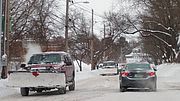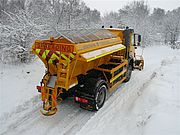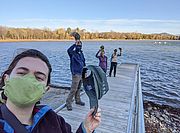The Lake Champlain Committee (LCC) has been named a “2020 Top-Rated Nonprofit” by GreatNonprofits, the leading provider of user reviews and ratings of charities and nonprofits. The Top-Rated Nonprofit Award is based on the five-star ratings and reviews that LCC received from volunteers, donors and community members. Read...
News from Selected Month
In January of 2020, a coalition of 30 business, environmental, low-income, youth, public health, faith, and climate justice organizations including LCC identified the Global Warming Solutions Act (GWSA) as an essential priority for the 2020 Vermont legislative session. Nine months later, in late September 2020, GWSA officially became law after a veto by VT Governor Phil Scott was overridden by both the Vermont House and Senate. The legislation requires Vermont to reduce climate damaging emissions while simultaneously creating jobs, improving resilience, reducing energy burdens for rural and marginalized communities, and using natural systems to capture and store carbon. Read...
The Randy Preston Road Salt Reduction Act, a bipartisan bill that will help to reduce road salt pollution in the Adirondack Park, was signed into law by Governor Cuomo on December 2, 2020. The bill passed both houses of the New York Legislature in July with nearly unanimous support. The Adirondack Park contains more than 11,000 lakes and ponds, and over 30,000 miles of rivers, brooks, and streams. Lake Champlain forms the eastern border of the Park and a significant portion of the New York portion of the Lake Champlain Basin is within Park boundaries. Read...
Lake Champlain is home to 51 known non-native and aquatic invasive species (AIS), from zebra mussels and alewife to water chestnut and Eurasian watermilfoil, but not yet Asian clam. Invasive species are not native to the Lake Champlain Basin and can compete with native species for space and food, clog water intake pipes, and limit recreational activities. Read...
“The importance of water is often overlooked today. To the Abenaki people, water is the web of life that connects all living things together in both past, present and future generations,” states Chief Don Stevens of the Nulhegan Abenaki Tribe in the short film, Nebi: Abenaki Ways of Knowing Water. Read...
The single entity of Lake Champlain contains five distinct segments, each with its own character: the South Lake, the Main Lake, and, east of the islands, Malletts Bay, the Inland Sea, and Missisquoi Bay. Read...
Salt flavors our food and keeps our winter travels safe, but it can have a negative impact on waterways. According to the United States Geological Survey (USGS), 20 million metric tons of road salt are spread annually in the U.S.—equivalent to approximately 20 million elephants. Applying less salt to roads and sidewalks can improve the health of the Lake Champlain Basin’s waters. Read...
Atlantic salmon spawning recently came to a close in Lake Champlain. Unlike their cousins in the Pacific Ocean, Atlantic salmon don’t typically die after spawning, but instead migrate back to the lake (or ocean) to feed.
Iridescent, delicious, and culturally significant, Atlantic salmon (Salmo salar) are prized in the northeast by anglers and the general public alike. Well-oxygenated, cold, deep, and fairly clear lakes, like Lake Champlain, are its primary habitat. As the seasons transition, so do salmon. In October and November, salmon move from the depths of Lake Champlain to spawn in the streams of the Lake Champlain Basin, such as the Boquet River in New York and the Winooski River in Vermont. Read...
Start the new year on the right foot with a hike in a state park! Both New York and Vermont State Parks are inviting everyone to celebrate the start of 2021 by heading out on the trails. Read...
Winter is a great time to get outdoors and it is especially helpful and healthful during the pandemic. The cold, crisp air is exhilarating and there are no biting insects! Some of the mantras for recreating safely in winter during Covid-19 are: prepare ahead, play local, physically distance from anyone not in your household, and move on after your outing so that others can enjoy the space. Below we share excerpts from guidelines for playing outdoors safely from our friends at the New York Department of Environmental Conservation (NY DEC) and Vermont Forests, Parks and Recreation (VT FPR). Read...
We weren’t sure how many people would turn out to monitor during a pandemic that required wearing a mask at public sites and quarantining for two weeks if traveling across state lines. But turn out they did! More than 160 community members signed up to check conditions at over 150 Lake Champlain and inland waterway locations during the 2020 season. They included returning veterans, first-timers, seasonal and year-round residents, couples, families, students, and friend groups. They took on more rigorous protocols, showed up virtually for training sessions via Zoom, and faithfully filed weekly reports. Read...
We send heartfelt thanks to Angela Shambaugh, our longstanding cyanobacteria monitoring program colleague who retired in October from the Vermont Department of Environmental Conservation (VT DEC). Angela has been a key partner in the monitoring program since its inception in 2003. In the early years she assisted in lab analysis, cyanobacteria assessments, water sampling, and community outreach while working at the University of Vermont. Read...
The University of Vermont (UVM) plans to replace its aging research boat with a hybrid electric “model of seaworthy sustainability”. The quiet, low-emission vessel will be able to run on electric power for two hours and be used as a floating classroom and laboratory for lake education and science. Read...
First discovered in the southern part of Lake Champlain in 1993, zebra mussels are now found throughout the lake in shallow water areas. Juvenile and adult zebra mussels attach to any hard surface—including native freshwater mussels, the lake’s most imperiled taxa. The Lake Champlain Committee is working with Michael Lew-Smith of Arrowwood Environmental to document the impacts of the invasive zebra mussels on native mussel populations as a first step in the conservation strategy. Learn more about zebra mussel impacts from Michael and fellow biologist Mark Ferguson (Vermont Fish & Wildlife Department) in this Outdoor Radio episode on Vermont Public Radio (VPR). Read...
Both Lake George and Mirror Lake in New York experienced cyanobacteria blooms in early November 2020, the first time cyanobacteria was documented in either waterbody. The Lake George bloom was discovered by the Lake George Association, one of several nonprofits working to protect the lake’s water quality. Read...
Today is #GivingTuesday, the international day of giving, and a great day to support organizations that make a difference in your life. During this past year, we have all been reminded of the solace and beauty of nature and the importance of clean water. A donation today will strengthen LCC's advocacy, field work, and outreach to protect water quality and access. Thank you for your consideration! Read...
















